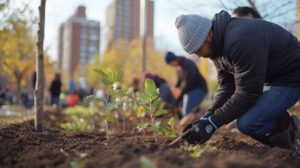العنف المنزلي لطالما كان واقعًا قاتمًا في العديد من المجتمعات في جميع أنحاء العالم. وفي كثير من الأحيان، تتركز المناقشات حول هذه القضية على النساء، اللاتي يواجهن بلا شك معدلات كبيرة من سوء المعاملة. ومع ذلك، من المهم الاعتراف بالتحديات والنضالات التي تواجهها فئة سكانية غالباً ما تكون ممثلة تمثيلاً ناقصاً - الرجال.
فيما يلي نظرة فاحصة على القوالب النمطية الجنسانية التي يمكن أن تكون ضارة لضحايا العنف المنزلي من الرجال، وانتشار العنف المنزلي ضد الرجال، وكيف يمكننا العمل على تحدي القوالب النمطية الضارة ودعم الرجال الذين قد يتم تجاهلهم.
القوالب النمطية الجنسانية للعنف المنزلي
تعزز سردياتنا المجتمعية، التي غالبًا ما تتأثر بوسائل الإعلام والمعايير الثقافية، القوالب النمطية الجنسانية. وتصور هذه الصور النمطية المرأة على أنها الضحية الوحيدة للعنف المنزلي، بينما يُنظر إلى الرجل على أنه الجاني دائمًا. وهذه الفكرة ليست مؤذية فحسب، بل هي بعيدة كل البعد عن الواقع.
العنف الأسري ضد الرجال: إحصائيات
إن التحالف الوطني لمناهضة العنف المنزلي (NCADV) تقارير (NCADV):
-
1 من كل 9 رجال يتعرضون للعنف الجسدي الشديد من الشريك الحميم، و/أو العنف الجنسي بالاتصال بالشريك الحميم، و/أو مطاردة الشريك الحميم
-
1 من كل 4 رجال تعرضوا لشكل من أشكال العنف الجسدي من قبل شريك حميم
-
1 من كل 7 رجال وقعوا ضحايا للعنف البدني الشديد (مثل الضرب والحرق والخنق) من قبل شريك حميم في حياتهم
-
تعرض 5.1 مليون رجل في الولايات المتحدة للمطاردة خلال حياتهم
تُظهر هذه الإحصائيات بوضوح أن الرجال غالبًا ما يكونون ضحايا للعنف الأسري أيضًا، على عكس الصور النمطية.
كيف تخلق القوالب النمطية الذكورية المحيطة بالعنف الأسري تحديات فريدة من نوعها
الرجال الذين يتعرضون للعنف المنزلي يمكن أن تزداد ظروفهم تعقيدًا بسبب القوالب النمطية الجنسانية - ليس فقط تلك المتعلقة بالعنف المنزلي تحديدًا، ولكن أيضًا الأعراف الاجتماعية المتعلقة بالسلوك الذكوري المقبول. يمكن أن تؤدي الصورة النمطية الضارة التي تقول بأن الرجال يجب أن يكونوا دائمًا أقوياء وقساة وغير عاطفيين إلى التقليل من شأنهم كضحايا أو تجاهلهم. وعلاوة على ذلك، قد يحجمون عن الإبلاغ عن الإساءة بسبب الخوف من السخرية أو عدم التصديق أو الوصم أو عدم الوعي بالمساعدة المتاحة.
هذا الفصل هو أكثر من مجرد ظلم للضحايا الأفراد؛ فهو يكرس الحلقة الضارة للعنف المنزلي لتحدي هذه القوالب النمطية وتغييرها، نحتاج إلى إعادة تعريف التوقعات المجتمعية حول الذكورة وزيادة الوعي بأن الرجال يمكن أن يكونوا ضحايا للعنف الأسري وهم كذلك.
واقع العنف المنزلي ضد الرجال
عندما نفكر في العنف المنزلي، فإن الصورة النمطية التي تتبادر إلى الذهن هي الإيذاء الجسدي. ومع ذلك، فإن العنف الأسري يتجاوز الأذى الجسدي. فقد يتخذ أشكالاً مختلفة، مثل الأذى العاطفي والنفسي, المالية, أو الاعتداء الجنسي. يمكن أن تكون هذه الأنواع من الإساءة مدمرة وطويلة الأمد مثل العنف الجسدي.
قد يواجه الضحايا الذكور التهديدات والتلاعب والمطاردة والعزلة القسرية وغيرها من أشكال السيطرة والهيمنة من قبل شركائهم. كما أنه من المرجح أن يتعرض الرجال بنفس القدر نتائج الصحة النفسية السيئة مثل اضطراب ما بعد الصدمة (PTSD) والاكتئاب والقلق نتيجة التعرض للعنف المنزلي.
تحدي القوالب النمطية وتقديم الدعم للضحايا من الذكور
إن كسر هذه القوالب النمطية الضارة وإتاحة الدعم لضحايا العنف المنزلي من الذكور مهمة معقدة وتستغرق وقتًا طويلاً. ومع ذلك، هناك العديد من الخطوات التي يمكننا اتخاذها لدفع عجلة التقدم وإحداث فرق في مجتمعاتنا المحلية. تشمل طرق المساعدة ما يلي:
-
تعزيز فهم أوسع للعنف المنزلي: ينبغي إشراك الضحايا الذكور في المحادثات والحملات المتعلقة بالعنف المنزلي. وينبغي عدم الاستخفاف بتجاربهم أو اعتبارها مزحة؛ وبدلاً من ذلك، ينبغي التحقق من صحتها والتعبير عنها.
-
تحدي القوالب النمطية الذكورية والتوقعات المجتمعية: من الضروري تحطيم القوالب النمطية الضارة عن الرجولة، وإظهار أن طلب الرجال للمساعدة أو التعبير عن مشاعرهم ليس ضعفًا.
-
تنفيذ برامج تثقيفية: ينبغي تنفيذ برامج تثقيفية في المدارس وأماكن العمل والمجتمعات المحلية للتوعية بالعنف المنزلي ضد الرجال. يمكن أيضًا تزويد صانعي السياسات وموظفي إنفاذ القانون والأخصائيين الاجتماعيين وأخصائيي الصحة النفسية بالتدريب المناسب لمساعدتهم على التعرف على الضحايا الذكور ودعمهم.
-
إلزام وسائل الإعلام بمعايير أعلى: يمكن أن يساعد التمثيل المتوازن للضحايا الذكور في التقارير الإخبارية والأفلام والتلفزيون في القضاء على الصور النمطية وزيادة الفهم المجتمعي للقضية.
-
تطوير (ومشاركة حول) موارد لضحايا العنف المنزلي من الرجال: في حين أن هناك موارد عديدة لضحايا العنف المنزلي من الإناث، إلا أن الدعم المقدم للرجال غالبًا ما يكون غير متوفر. إن تطوير المزيد من الملاجئ والخطوط الساخنة وخدمات المشورة التي يمكن أن تلبي احتياجات الضحايا الذكور أمر في غاية الأهمية. يجب الترويج لمثل هذه المبادرات على نطاق أوسع، حتى يتمكن الرجال الذين يتعرضون للعنف من معرفة إلى أين يذهبون للحصول على المساعدة. هنا في دار الأزمات، نقدم في دار الأزمات دعم العنف المنزلي للرجال والنساء والأطفال في المقاطعة الشرقية، سان دييغو. ادعم عملنا من خلال التبرع اليوم أو المشاركة حول خدماتنا
في دار الأزمات, نحن هنا خلال هذه الأوقات العصيبة لدعم الأفراد والعائلات بخدماتنا ومواردنا. نحن رواد في الخدمات الهامة في المقاطعة الشرقية في سان دييغو، حيث نقدم خدمات التدخل في الأزمات، والإسكان الانتقالي والدائم، وخدمات للعائلات والأطفال الفارين من العنف المنزلي.
ساعدنا في الوصول إلى المحتاجين بالتبرع أو التطوع اليوم! يمكنك أيضًا الاشتراك في نشرتنا الإخبارية لتبقى على اطلاع دائم حيث نعمل على ربط العائلات والأطفال والأفراد بالموارد الضرورية. معاً، يمكننا تمكين الناس من تجديد حياتهم!







